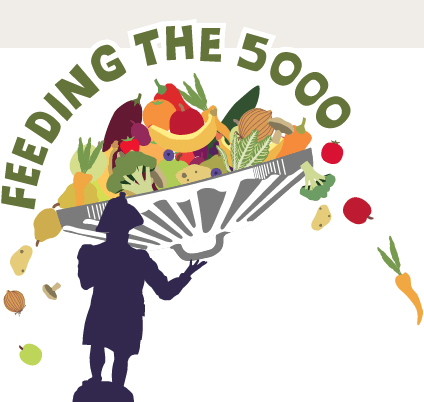Food waste facts
All statistics are fully referenced in Tristram Stuart, Waste: Uncovering the Global Food Scandal (Penguin, 2009).”
There are nearly one billion malnourished people in the world, but the approximately 40 million tonnes of food wasted by US households, retailers and food services each year would be enough to satisfy the hunger of every one of them.
The irrigation water used globally to grow food that is wasted would be enough for the domestic needs (at 200 litres per person per day) of 9 billion people – the number expected on the planet by 2050.
If we planted trees on land currently used to grow unnecessary surplus and wasted food, this would offset a theoretical maximum of 100% of greenhouse gas emissions from fossil fuel combustion.
10% of rich countries’ greenhouse gas emissions come from growing food that is never eaten.
The UK, US and Europe have nearly twice as much food as is required by the nutritional needs of their populations. Up to half the entire food supply is wasted between the farm and the fork. If crops wastefully fed to livestock are included, European countries have more than three times more food than they need, while the US has around four times more food than is needed, and up to three-quarters of the nutritional value is lost before it reaches people’s mouths.
UK Households waste around 20% of all the food they buy – but the good news is that this suggests a 17% reduction since 2007. We’re improving!
All the world’s nearly one billion hungry people could be lifted out of malnourishment on less than a quarter of the food that is wasted in the US, UK and Europe.
A third of the world’s entire food supply could be saved by reducing waste – or enough to feed 3 billion people; and this would still leave enough surplus for countries to provide their populations with 130 per cent of their nutritional requirements.
Between 2 and 500 times more carbon dioxide can be saved by feeding food waste to pigs rather than sending it for anaerobic digestion (the UK government’s preferred option). But under European laws feeding food waste to pigs is banned. In Japan, South Korea and Taiwan, by contrast, it is mandatory to feed some food waste to pigs.
An estimated 20 to 40% of UK fruit and vegetables rejected even before they reach the shops – mostly because they do not match the supermarkets’ excessively strict cosmetic standards.
8.3 million hectares of land required to produce just the meat and dairy products wasted in UK homes and in US homes, shops and restaurants. That is 7 times the amount of Amazon rainforest destroyed in Brazil in one year, largely for cattle grazing and soy production to export for livestock feed.
The bread and other cereal products thrown away in UK households alone would have been enough to lift 30 million of the world’s hungry people out of malnourishment
4600 kilocalories per day of food are harvested for every person on the planet; of these, only around 2000 on average are eaten – more than half of it is lost on the way.
24 to 35% of school lunches end up in the bin.
An estimated 15 million tonnes of food wasted in Britain from the plough to the plate.
All Food Waste Facts are from Tristram Stuart’s Waste: Uncovering the Global Food Scandal (Penguin, 2009).



I pledge to reduce my food waste and want businesses to do the same

